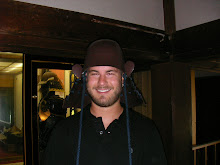




I didn't take many pictures on the trip I took to Hiroshima with my parents, but I did manage to get my camera out to take some shots of the Genbaku, or A-bomb, Dome. To say it's a sobering sight is to greatly understate the area. I'm not very interested in the debate over whether or not the US should have used this weapon during the war, the salient points have been discussed for over 60 years by smarter minds than my own. Indeed, the morality of what happened didn't really enter into my mind as I walked around the site. Instead, I was struck by the dichotomous nature of scientific progress. The ability to harness the power contained at the atomic level can at once save humanity, or be instrumental in its efforts to destroy itself. Then again, on reflection, I don't think that the dichotomy of good and evil is contained in science, but within ourselves. Science qua science is by nature amoral. Discovering and analyzing the properties and relationships inherent to our physical universe is a project that transcends ethics. It is in the application of such knowledge that we err. The entire Hiroshima area is a testament to what humans can do when we give in to our more destructive urges, which, history being the primary witness, are legion. When I look at these pictures, it reminds me that we must tread carefully, and to always understand to the fullest the ramifications of our actions. Humanity, not science, is the entity that so precariously stands at the edge of the abyss. I believe in scientific progress, but knowledge without reflection is, at best, dangerous, and we should never forget the lessons taught by monuments such as these. If not out of respect for the past, then for the protection of our future.

No comments:
Post a Comment